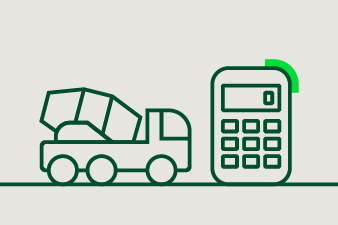Colour variation
Mixture of materials can influence the colour
Concrete is a mixture of materials, the variability of which can influence the colour of the finished concrete.
However, if the same sources of materials are maintained throughout a contract, these inherent variations should not alter the final colour significantly. A mottled surface is, to some extent, indicative of a well compacted concrete. Some variation in colour, even with nominally the same concrete, is impossible to avoid. Concrete will never be a monotone block colour as would be expected, for example, from a painted surface.
Cement varies according to the materials from which it is manufactured. The incorporation of additions such as fly ash, ground granulated blastfurnce slag (GGBS) and microsilica will also be a major influence.
Fine aggregates are a natural material and vary in colour depending on the source. Particles greater than ~500µm are not visible on as-struck concrete unless a thin layer of cement is removed. Similarly coarse aggregate does not influence the colour significantly unless exposed. Particles less than ~150µm act as a pigment and can influence the colour of concrete, the effect being more noticeable on lighter-coloured cement.
Cement content within the normal range for structural concrete has little effect on colour. However, concretes made with different water contents will often be different, the drier the concrete, the darker the colour. Variations between nominally the same batches are not uncommon although this reduces with exposure time.
Different form-face materials will affect the colour due to their different absorbances. Leaving formwork in place for a longer period will also cause the colour to be darker. This can be quite striking if GGBS is used giving a blue tinge, although it will oxidise once exposed to air and lighten.
Concrete is not impermeable. In a damp environment it will appear darker compared to a dry environment. When initially struck, the concrete will be relatively dark, but as it dries out and carbonates, it will become progressively lighter and even in colour. This is why concrete should only be assessed for colour after a suitable period which may be up to 6 months.
